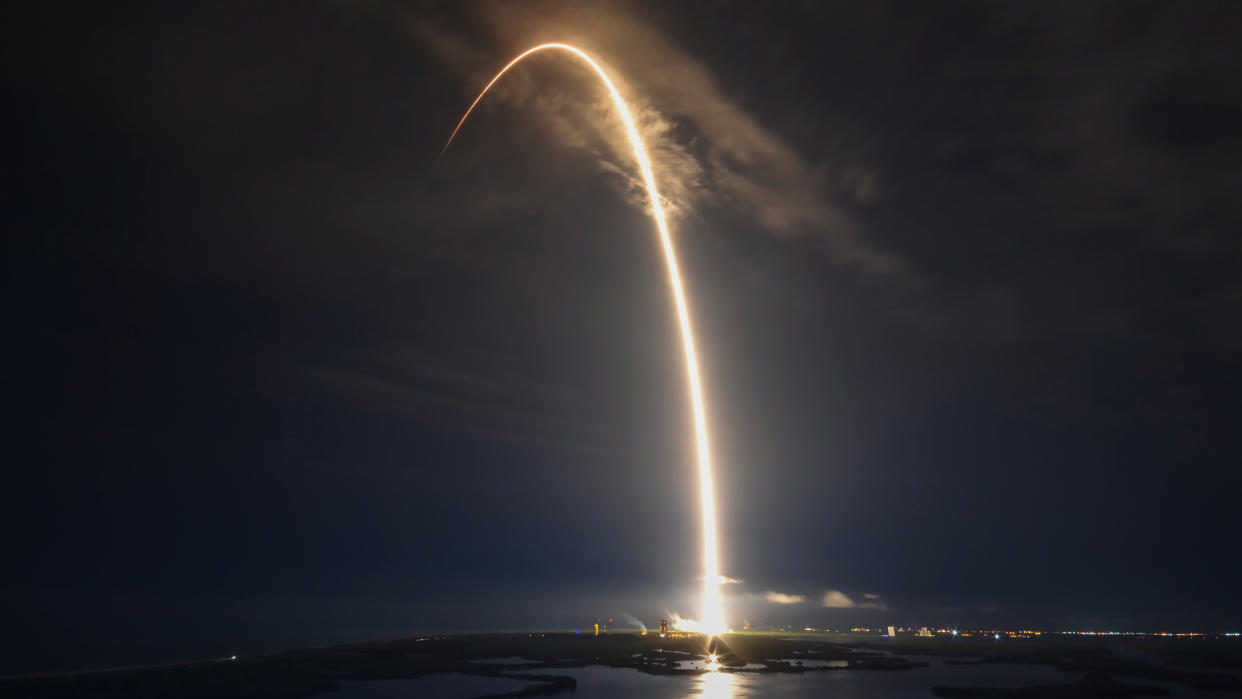SpaceX delays launch of Starlink satellite to next week due to offshore impacts of Hurricane Hilary. Here's how to watch it live.

SpaceX has delayed its planned launch of 21 new Starlink satellites to early Tuesday (Aug. 22) due to the effects of Hurricane Hilary in the Pacific Ocean. You'll be able to watch it live next week online.
A Falcon 9 rocket carrying the Starlink spacecraft is scheduled to lift off from Vandenberg Space Force Base in California on Tuesday at 2:04 a.m. EDT (0604 GMT; 11:04 p.m. local California time on Aug. 21). The rocket was originally slated to launch early Thursday (Aug. 17) and delayed one day already. The impact of Hurricane Hilary on rocket recovery operations forced four more days of delay.
"Due to Hurricane Hilary impacting recovery operations in the Pacific, we are standing down from tonight's Falcon 9 launch of Starlink," SpaceX wrote on X (formerly known as Twitter) late Thursday. SpaceX recovers its first-stage Falcon 9 boosters by landing them on a drone ship in the Pacific about 8 minutes after launch.
Hurricane Hilary is currently a powerful category 4 storm in the Pacific Ocean and was located about 400 miles (640 kilometers) south of Cabo San Lucas, Mexico, according to the National Hurricane Center. It is expected move toward the west coast of Baja Mexico tonight and reach Southern California by Sunday night (Aug. 20).
When SpaceX is able to launch the Starlink flight, you'll be able to watch it live here at Space.com, courtesy of SpaceX, or directly via the company. Coverage is expected to begin five minutes before launch.
Related: Starlink satellite train: How to see and track it in the night sky

The Falcon 9's first stage will come back to Earth on Tuesday morning, if all goes according to plan: It's scheduled to land on the SpaceX drone ship Of Course I Still Love You about 8.5 minutes after liftoff.
It will be the 15th launch and landing for this particular booster, according to a SpaceX mission description. That's just one short of the company's reuse record, which is held by two different Falcon 9 first stages.
RELATED STORIES:
— SpaceX Falcon 9 rocket launches for record-breaking 16th time, lands on ship at sea
— 8 ways that SpaceX has transformed spaceflight
The mission was originally supposed to occur on Thursday (Aug. 17), when it would have been the second leg of a Starlink doubleheader: The company launched 22 of the broadband satellites from Cape Canaveral Space Force Station in Florida late Wednesday night (Aug. 16).
But SpaceX ended up pushing Thursday's planned launch back by 24 hours. The company then delayed it to no earlier than Tuesday, due to predicted impacts of Hurricane Hilary on rocket recovery operations.
SpaceX has launched nearly 5,000 Starlink satellites to low Earth orbit (LEO) to date — a huge number to be sure, but likely just the beginning.
Elon Musk's company already has permission to deploy 12,000 Starlink satellites in LEO, and it has applied to an international regulator for approval to loft another 30,000 spacecraft on top of that.
Editor's note: This story was updated at 11:00 p.m. EDT on Aug. 17 with news of the new target launch date of Aug. 22.

